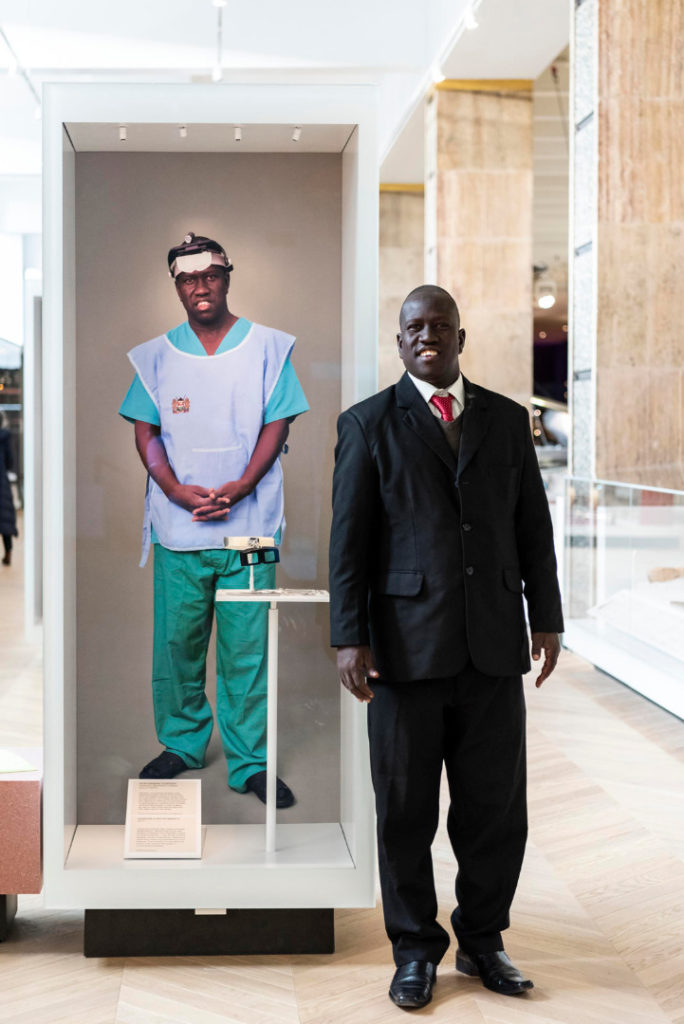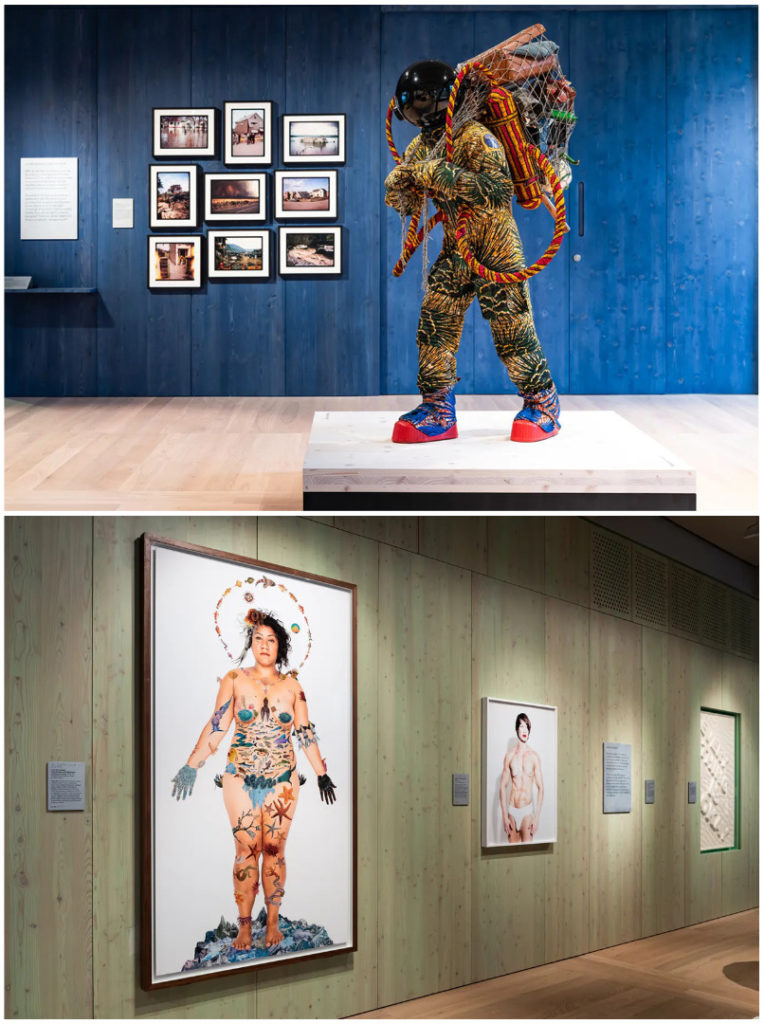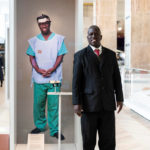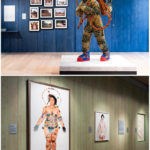Editorial
Article DOI: https://dx.doi.org/10.15180/201408
Keywords
curating medicine, Editorial, Medicine: The Wellcome Galleries
Special issue: ‘Curating Medicine’
https://dx.doi.org/10.15180/201408/001As the current pandemic makes abundantly clear, health and medicine touch the lives of everyone. This makes these topics relatively singular when presented in museums: all visitors will have lived experience of at least some of the items and issues on display. While this presents fantastic engagement opportunities for museums, it also poses challenges. First, there is the diversity of individual experiences that must be taken into account. In addition, given the deeply personal connections visitors can make with medical material culture and the themes this represents, it can also be triggering, eliciting strong emotional responses that traverse grief, fear, sadness and even wonder. So how can curators navigate this? This special issue of the Science Museum Group Journal on ‘Curating Medicine’ considers recent instances of this field of curatorial practice.
The issue was produced to mark the 2019 opening of Medicine: The Wellcome Galleries, a major new exhibition suite at the Science Museum in London. It was principally conceived to capture the curatorial voices of those involved with recent medical curatorial projects, including the Science Museum’s new galleries, on public record as well as to recognise the momentum this field of curatorial activity has gained in the last few years (see Parry, this issue). As such, it charts some instances of curating medicine from the perspectives of practitioners themselves, providing insights to the approaches they took and why, the challenges they faced and the strategies used to overcome them, as well as outlining avenues for future directions. In this way, the special issue responds to Science Museum Group Journal Editor Kate Steiner’s reflections about how the journal, as a peer-reviewed publication, might ‘better reflect museum practice and present daily research’ and ‘experiment with article formats’ (Steiner, 2019). The inclusion of this kind of reflective writing is important for a journal in this context because, as the Science Museum Group’s Head of Research, Tim Boon, highlights in a previous editorial, it can help museum professionals ‘compare, understand, communicate and modify’ their own practices, as well as provide opportunities for sharing work with colleagues in academia who have common interests, which might lead to productive research collaborations in the future (Boon, 2020). Such work therefore has the capacity not only to ensure the documentation of individual projects within institutional histories, but also to contribute to the evolution of curatorial practices and catalyse new directions in research.
The projects and papers featured in this special issue stem from my time as Research Manager at the Science Museum between 2018–2020. A substantial part of my role was dedicated to developing and running the research programme that accompanied the Medicine galleries project and contributed to its legacy (Wade, 2019). Recognising the universal relevance of health and medicine as subjects, an interdisciplinary approach was central to the programme and a guiding principle was to provide opportunities for exchange between practitioners and academics so that knowledge, and the different ways this might be produced and communicated, could be shared in ways that I hope were mutually beneficial for all involved. Two of the major conferences that featured in the programme were Representing the Medical Body in 2019 (co-organised with Curator of Art Collections Katy Barrett) and Medicine: The Wellcome Galleries Conference in 2020, which celebrated the opening of the new exhibition suite. These events focused on artistic and curatorial practice respectively and included contributions from artists, curators, museum professionals and academics, who reflected on the specificities of displaying and representing health and medicine in art, exhibitions and museum collections. This special issue adopts this same thematic focus and approach, in part as a result of my own position as an art historian concerned with curating and visual cultures of museum display, but also to recognise that interest in health and medicine in contemporary art, exhibitions, museum display and related curatorial practices has been steadily increasing, thereby contextualising the arrival of the new galleries in this wider field (see, for instance, Alberti and Hallam, 2013; Arnold, Bencard et al, 2019; Barlow, 2020; Bencard, Whiteley and Thon, 2019; Hallam, 2016; Rodríguez-Muñoz, 2020; Sandell, Dodd and Garland-Thompson, 2010).
The special issue includes a paper in which the Science Museum’s medicine curators discuss the development of Medicine: The Wellcome Galleries. The team offer a brief history of displaying medicine at the Science Museum and explain the conceptual frameworks that informed each of the new galleries. Ensuring people remained at the forefront of displays was an important consideration shared by all of the curators. The article describes some of the strategies used to achieve this, including participation projects, exhibition design decisions and the incorporation of contemporary artworks such as Sîan Davey’s full-size photographic portraits of the individuals whose stories are presented on gallery.

Samson Lokele with Sîan Davey’s on-gallery portrait during the opening events for Wellcome: The Medicine Galleries
© Science Museum/Science & Society Picture LibraryIt is notable that while the Medicine galleries project was in progress, other significant permanent displays about health and medicine were also underway elsewhere in the UK, including Wellcome Collection’s Being Human, which opened in 2019, the Hunterian Museum’s major renovation scheduled for completion in 2023, and the Vagina Museum, which moved to its first permanent site in 2019, representing a broader trend in this field of activity.

Being Human permanent exhibition at Wellcome Collection
© Wellcome CollectionIndeed, curator and historian of medicine Manon Parry recognises that it has been a generative time for medical collections and medicine museums across Europe. Parry charts recent developments in curating medicine through a selection of case studies and advocates for museums to embrace displaying ‘risky’ or hitherto unpopular subjects in order to engage diverse publics with their complexities. The article proposes some ways that medical collections might productively and experimentally address topics that have historically been identified as challenging, urging institutions to become more agile when tackling current issues and debates to secure their social relevance in the contemporary moment.
Rapid Response Collecting is one strategy used by curators to respond to current events and ensure significant moments in the present are captured and represented in museum collections for the future. Adopted by the V&A as a discrete strand of collecting activity in 2014,[1] the approach has quickly gained traction with many museums developing policies and projects pertaining to contemporary collecting. Curator Brenda Malone’s contribution to this issue documents her work collecting the material culture of the Irish abortion referendum at the National Museum of Ireland in 2018. Malone outlines how she developed a schema for collecting this historic moment in the absence of an institutional strategy and introduces some of the objects that were collected. The project was a catalyst for subsequent contemporary collecting projects at the Museum, which resulted in the adoption of a Contemporary Collecting Policy in 2019, formalising this type of activity within the institution. Posters and banners formed a central focus of the referendum collecting activities and it is notable that many of these items were handmade, combining craft and activism in a ‘craftivist’ approach to campaigning (Greer, 2014). This references the long history of craft being used for social and political ends, from the embroidered banners created by suffragettes to the more recent AIDS memorial quilt (Newmeyer, 2008) Wolters, this issue. In fact, Malone presented this collecting project at the Science Museum’s Material Culture of Health Activism workshop in 2019 and a significant part of this event was the Lotus Unfolding Ceremony of Block 3 of the Dutch AIDS Memorial Quilt, which had been recently acquired by the Science Museum.[2]
As well as facilitating the ceremony, Jörn Wolters of Stichting NAMENproject Nederland presented a history of AIDS memorials at this same event. Wolters’ paper has been expanded for this special issue into the Science Museum Group Journal’s first photo essay, which visually documents AIDS memorials since the early 1980s, charting an evolution from informal projects to more formal, institutionally led approaches and making a case for their status as cultural heritage. AIDS memorials as cultural heritage, whether in the form of public art, monuments or events, offer another perspective from which the disease and its impact might be considered beyond the purely medical or scientific, providing possibilities for meaningful encounters with issues relating to health and medicine in the public realm and creating spaces where, significantly, the actual individuals who lost their lives to the disease can be represented and remembered.
Wellcome: The Medicine Galleries includes four contemporary art commissions, expanding possibilities for the ways that health and medicine might be encountered and experienced by visitors on gallery. Curator of Art Collections Katy Barrett reflects on the process behind these commissions and interviews three of the artists about their experiences of proposing and realising their projects. The presentation of contemporary art in non-art museums has been a vibrant field of curatorial activity since the 1990s, receiving increasing academic attention over the last decade, primarily in relation to its display in collections of anthropology, natural history, science and social history (Arends, 2009 and 2019; Carroll La, 2011; Redler Hawes, 2010; Robins, 2013; Rossi-Linnemann and de Martini, 2019; Wade, 2020). Barrett raises the question of what art can contribute in the context of medical museum displays specifically.[3]
Staying with the topic of contemporary art and medicine, curator George Vasey examines Misbehaving Bodies: Jo Spence and Oreet Ashery, an exhibition at Wellcome Collection in 2019–2020, which he co-curated with Bárbara Rodríguez Muñoz. Vasey reflects on the curatorial strategies used to create a safe and supportive community space in which visitors could engage with artworks about illness and dying as well as encounter multiple perspectives on these subjects. Vasey’s essay also raises the issue of the wellbeing of staff involved in developing exhibition projects about health and medicine, making a case for the provision of support for staff being embedded in institutional practices.
While the absence of COVID-19 related articles appears like somewhat of an oversight in a medical themed issue being published in the midst of the pandemic, the opening of the Medicine: The Wellcome Galleries and the completion of the accompanying research programme occurred before the world entered this unprecedented moment in recent history.[4] Nevertheless, Ken Arnold and Danielle Olsen’s contribution discusses the Wellcome’s cultural project Contagious Cities (2018–2019), which explored how populations across the world have responded to and prepared for epidemics. Interdisciplinary in approach, the project placed emphasis on artist’s projects and international collaboration. Here, the authors reflect on what they learned about co-creating during this project and consider how Wellcome’s institutional authority impacted this work in advance of embarking their next international cultural project, which focuses on another important global issue: mental health.
Collaborative approaches to curating and exhibition making are a feature of all of the contributions in this special issue. Participation and co-curation projects are becoming more embedded in museums as they seek to become more inclusive, relevant and welcoming places that reflect the reality of the communities that surround them.[5] Yet these approaches seem particularly well-suited to developing exhibitions about health and medicine, given the personal nature of the relationships people forge with these topics and the multiplicity of experiences amongst patients, practitioners and museum visitors. In this context, collaborative curatorial methodologies provide opportunities for the development of multi-faceted and multi-authored exhibitions that none of the contributors could have realised by working on their own. This way of working offers possibilities for combining personal experiences with medical histories and material cultures, artistic, clinical and scientific knowledge in ways that are as much emotive as they are informative to create spaces and circumstances for meaningful discussions, encounters and experiences amongst museums’ wide ranging stakeholders and visitors.



